San Cristóbal de La Laguna
San Cristóbal de La Laguna, informally known as La Laguna, is a city in Tenerife. It is the oldest city on the island and has a well-preserved city centre, and in 1999 was designated a ![]()
Understand
History
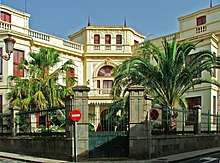
First called Aguere by the indigenous Guanche inhabitants, the entire valley and the large lake which once existed in its depression (hence the Spanish name La Laguna) was originally a pilgrimage site. Following the Battle of Aguere in 1494, the Spanish officially established their own settlement in 1496 and declared it the capital of Tenerife, and later of all the Canary Islands.
The city centre with its current layout and architecture dates largely to the late 16th century. Its urban plan was considered to be so successful that it was then used as a blueprint for later Spanish colonial cities in the New World, including such diverse places as Oaxaca, Lima, and Havana. Whereas coastal cities on Tenerife were periodically raided by pirates, San Cristóbal de La Laguna enjoyed steady growth and peace because of its inland location.
By the end of the 17th century the tides started to turn however, and the city suffered from a declining population. In 1723, its title of capital was stripped and transferred to adjacent Santa Cruz de Tenerife. A consequence of the tampered growth is the conservation of most of the historic city centre, in contrast with Santa Cruz de Tenerife that transformed into a metropolis with a high rise skyline. For history and architecture loving travellers, the historic centre makes San Cristóbal de La Laguna a must-see destination when visiting Tenerife. Since the centre was declared a ![]()
With 150,000 inhabitants, San Cristobal de La Laguna is still the third most populous city of the Canarias, after the capitals Santa Cruz de Tenerife and Las Palmas. It was the ancient capital of the Canary Islands archipelago, and is still widely considered its cultural capital.
- 🌍 Oficina Turismo (Tourist Office), C/ Obispo Rey Redondo, 7 (Casa Alvarado Bracamonte), ☎ +34 922 631 194. M-F 09:00-14:30, Sa Su 10:00-14:00; closed holidays. Located in a grand 17th-century manor. Helpful staff can advise on ongoing events and hand out free maps.
Climate
| San Cristóbal de La Laguna | ||||||||||||||||||||||||||||||||||||||||||||||||||||||||||||
|---|---|---|---|---|---|---|---|---|---|---|---|---|---|---|---|---|---|---|---|---|---|---|---|---|---|---|---|---|---|---|---|---|---|---|---|---|---|---|---|---|---|---|---|---|---|---|---|---|---|---|---|---|---|---|---|---|---|---|---|---|
| Climate chart (explanation) | ||||||||||||||||||||||||||||||||||||||||||||||||||||||||||||
| ||||||||||||||||||||||||||||||||||||||||||||||||||||||||||||
| ||||||||||||||||||||||||||||||||||||||||||||||||||||||||||||
Unlike most other cities on the Canary Islands, San Cristóbal de La Laguna enjoys a Mediterranean climate instead of an arid climate. Temperatures are mild throughout the year, and the increased elevation prevents it from getting too hot in summer. The maritime and subtropical influences also keep temperatures above frost at all times. Most of the rain falls during winter months, which condenses from the prevailing northeasterly winds.
Get in
By plane
🌍 Tenerife Norte (Los Rodeos, TFN IATA) is just next door to the city. Titsa bus lines 102, 107, and 108 all depart from the airport to the central bus exchange (intercambiador), which is a single stop away. Departures are approximately every half-hour, and a one-way ticket is €2.45, payable directly to the bus driver.
🌍 Tenerife Sur (Reina Sofia, TFS IATA) is 70 km to the south-west, with good bus connections to the city.
By bus
La Laguna is well-connected with other parts of the island by bus, with most buses stopping at the 🌍 La Laguna Intercambiador (bus exchange), which is about a ten-minute walk to the centre. The Titsa Information Centre (tel. +34 922 381 807, M-F 06:00-20:00, Sa Su and holidays 09:00-17:00) has bus schedules and route maps, and sells Bono cards, which can save 25% on bus fares as well as on museum entries.
From the Santa Cruz bus exchange, buses 14 and 15 arrive every 10 minutes or so, with a journey taking 20 minutes and costing €1.45. Buses 101, 102, and 103 serve Puerto de la Cruz, and 108 is the most direct bus to La Orotava.
By tram
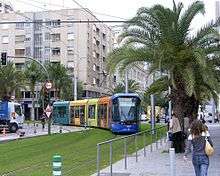
Line 1 of the MetroTenerife tram system links Santa Cruz with La Laguna, terminating at 🌍 Trinidad, at the southern edge of the historic centre. Trams depart approximately every 10 minutes, and the journey takes 20 minutes. There is an automated ticket vending machine at every stop; a one-way fare costs €1.35, and Bono cards are accepted.
By car
Motorway TF-5 connects the city with Santa Cruz to the east and with Puerto de la Cruz and La Orotava to the west. From the south of the island, TF-1 connects with the shorter TF-2, from which travellers can pick up the TF-5.
The historic city is closed to motor traffic, and therefore drivers must park on the outskirts. There is a large free public 🌍 car park on the eastern edge of the old city with a second free 🌍 car park just a short distance north, but parking spaces can be very scarce, so be prepared to circle around the lot a few times before finding a space.
Get around
The historic city centre is completely pedestrianized and easy to walk around. For further distances, Titsa buses also function as the local bus service; see above for details.
See
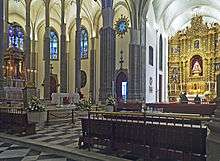
The following sights are all located in the beautiful world heritage listed historic center.
- 🌍 Mirador de Jardina, Tf 12. 24/7. Viewpoint in Anaga, with one of the best views over the city. Free.
- 🌍 Cruz del Carmen. 24/7. Viewpoint at 920 m with a wonderful view over the valley and the city. There is a chapel (Ermita de la Cruz del Carmen) that's worth a visit. Free.
- 🌍 Plaza del Adelantado. 24/7. One of the central plazas in the city, named after conqueror of the island Tenerife, Alonso Fernandez de Lugo, who had his residence at this plaza in the 16th century where what is currently the Convent of Santa Catalina de Siena. Until the end of the 20th century the plaza was the most important location for public events, markets, processions, bullfights, and even the execution of death sentences. For the first centuries of its existence the plaza was barren, until it was paved for the first time in 1798 and trees were added to provide shadow in 1843. The central marble fountain is the most characteristic element of the plaza, and the most aesthetic of the historical quarter. It was sculpted in Marseille where it embarked to San Cristóbal de La Laguna in 1869. The 30 ton fountain arrived by ship, and was inaugurated in 1870. Free.
- 🌍 Mirador de Aguaide, Sendero Fermin Delgado. 24/7. Viewpoint on a short distance from the Chinamada village, with views on the coastline and surrounding countryside. For nature lovers there are plenty of lizards and birds to spot, and colourful flowers in spring. Free.
- 🌍 Mesa Mota Monument (Tenerife Airport Disaster Memorial), Camino Mesa Mota 2. 24/7. The International Tenerife Memorial March 27, 1977, erected in memory of the 583 victims of the Los Rodeos Airport (now Tenerife North Airport) accident, the deadliest accident in aviation history. That morning, 2 Boeing passenger jets collided on the airports runway, killing almost all passengers in the resulting fire. From the site of the memorial there is a view of the airport and even, on clear days, the silhouette of Mount Teide. The monument was inaugurated on March 27, 2007 (the 30th anniversary of the disaster), in the presence of many relatives of those killed in the accident. It is shaped like a spiral staircase, with steps that connect the earth and sky. The 18 m high structure was designed by the Dutch artist Rudi van de Wint. Free.
Architecture and religious buildings
- 🌍 Iglesia de la Concepción (Church of the Immaculate Conception), Plaza de la Concepción, s/n, ☎ +34 922 259 130. M-F 08:30-13:30 18:00-19:30, Sa 08:30-13:30 18:00-20:30, Su 07:30-14:00 16:30-20:00. Established in 1511, this is the oldest parish church on the island. The interior has beautifully-painted Mudejar wooden ceilings, and visitors can climb the bell tower, which is the tallest in the Canary Islands. Outside the church is an ossuary with the remains of victims of many epidemics. Photography inside the church is not permitted. €2 (adults).
- 🌍 Catedral de San Cristóbal de La Laguna (Cathedral of San Cristóbal de La Laguna), Plaza Fray Albino, s/n. M-Sa 08:00-18:00, Su 08:00-14:00. The current structure was built between 1904 and 1915 in the Neoclassical and Neogothic styles, on the site of an early 16th-century chapel which is believed had been built atop an earlier Guanche necropolis. Inside is the elaborate Baroque 18th-century altarpiece of the Virgin of Los Remedios (La Virgen de los Remedios), the patron saint of the city; seven painted panels have been attributed to the Flemish master Hendrick van Balen. Also noteworthy is the marble 18th-century pulpit carved by the Genoese master Pasquale Bocciardo. Free.
- 🌍 Convento de Santa Clara de Asís (Convent of Santa Clara of Assisi) (between C/ Viana and C/ Anchieta). Tu Th Sa 10:00-17:00. This working Franciscan convent was established in 1547 as the first nunnery in the Canary Islands. Inside, visitors can see the beautiful carved wooden balconies and visit the museum, which showcases monastic treasures of gold, silver, textiles, and sculpture and painting. €5 (adults), free (children).
- 🌍 Real Santuario del Santísimo Cristo de la Laguna (Royal Sanctuary of the Christ of La Laguna), Plaza San Francisco, s/n (Plaza del Cristo). M-Th 08:00-13:00 16:00-20:45, F 08:00-21:00, Sa 08:00-13:00 16:00-20:45, Su 08:00-21:00. The most important religious building in the city, this houses the Cristo de La Laguna ('Holy Christ of La Laguna), one of the most venerated religious artifacts in the Canary Islands and a symbol of the city. The church also has an exact replica of the Shroud of Turin, one of only two copies existing in Spain. Free.
- 🌍 Iglesia de Santo Domingo de Guzmán (Church of St. Dominic of Guzmán), C/ Santo Domingo, 1, ☎ +34 922 259 927. Daily 10:00-19:00. Built on the site of an earlier chapel, the current church and the attached convent date to the 16th and 17th centuries. The church is known as the burial spot of Amaro Pargo, one of Spain's most infamous pirates, a La Laguna native who died here in 1747. Also noteworthy is the interior 22-metre-long fresco, painted in the 1940s by Mariano de Cossío and Martínez-Fortún. Free.
- 🌍 Convent of Santa Catalina de Siena (Convento de Santa Catalina de Siena), Calle Dean Palahi 1 (Plaza del Adelantado), ☎ +34 922 25 85 30. Dominican order convent at the Plaza del Adelantado, hosting the preserved body of Maria de Leon Bello y Delgado, popularly called La Siervita. The convent was founded in 1606 by alderman Juan de Cabrejas and his wife, who purchased the residence of Alonso Fernandez de Lugo in the eaerly 17th century and converted it into the convent. In 1611 the convent was inaugurated and 4 nuns from Seville moved in, multiplying to many hundreds of nuns over the next centuries. The current church is topped with a belfry with a single nave, and high and low choirs. Noteworthy are the 2 carved wooden access doors flanked by stonework arches. The altarpiece stands out in particular, along with the ironwork that separates the inner sanctum dating from the 17th century. The large altarpiece in the main chapel is from the hand of Antonio de Orbaran and Antonio Alvarez, dating from 1665. The convent was declared a cultural monument of the Canarias in 1986, and worth a visit.
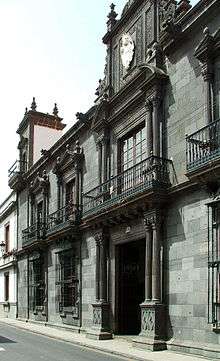
- 🌍
Casa Salazar, Calle de San Agustín 28. A Baroque palace, and one of the most outstanding examples of Canarian architecture that combines Mannerist and Neoclassical elements. The palace is the seat of the Dioscese of Nivariense. Construction started around 1829 by Cristóbal Salazar de Frías, and completed by his son around 1687 who becamse the first Count of Marqués de Estremiana. Bishop Ramón Torrijos y Gómez purchased the estate in 1891 and turned it into its current function of diocese. The palace is a cultural monument since 1982, and part of the historic centre that was declared a

- 🌍 Convent of St. Agustin (Convento San Agustín), Calle San Agustín 46-48. Convent attached to the fire damaged church of the same name, which became the first institute of the Canary Islands in 1846, the IES Cabrera Pinto.
- 🌍 Church of the Dolores Hospital (Iglesia y Hospital de Nuestra Señora de los Dolores), Calle San Agustín 40. Church between the former Convent of St. Agustin and the Casa Salazar, occupied by the bishopric of Tenerife. It was the first permanent hospital in the city, dating back to the 16th century, whereas the church itself was only added in the 18th century. Pope Leo X authorized its construction in 1514, co-housing the Confraternity of Mercy, which soon relocated to the Church of Santo Domingo de Guzmán. The church has a single rectangular nave and presbytery, and houses important artistic works from the 17th and 18th century, most of which were from the hands of Cristóbal Hernández de Quintana and Antonio Estévez. The gilded wooden altarpiece sands out, with a sculpture of the Virgin Mary.
- 🌍 Adrián Alemán de Armas Library (Biblioteca Municipal Adrian Aleman de Armas), Calle Juan de Vera 9, ☎ +34 922 25 99 40. M-F 09:00-21:00. Public library in a historic building, named after Adrián Alemán de Armas (1935 - 2008), a journalist, doctor in geography, and history and Spanish professor. This beautifully restored building is a prime example of historic architecture repurposed for modern needs. The library has free wifi access and power sockets. The garden has benches under lime trees providing shadow, making it a great place to rest. Free.
- 🌍 Church of St. Juan Bautista (Iglesia de San Juan Bautista), Calle Pablo Iglesias. Parish church with a single nave decorated with timber sculptures dedicated to San Juan Bautista, the co-patron of the city, and before the 16th century merely a saint like any other. When the bubonic plague was brought into the city in 1581, concealed in tapestries imported from Flanders, an outbreak followed immediately and resulted in 9,000 casualties. The dead were buried in mass graves at an improvised cemetery. The outbreak was declared over when no more deaths had occurred for a year, on the 24th June 1582 -- the day of San Juan Bautista. As a monument in honour of the saint, a church was constructed and named after him near the cemetery. Free.
- 🌍 St. Juan Bautista Cemetery (Cemeterio de San Juan Bautista), Leocadio Machado. Improvised cemetery where over 9,000 victims of the 1581 bubonic plague outbreak are buried.
Museums and galleries
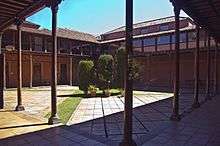
- 🌍 Museo de Historia y Antropología de Tenerife (Casa Lercaro / Museum of the History of Tenerife), C/ San Agustín, 22, ☎ +34 922 825 949. Tu-Sa 09:00-20:00, Su M and holidays 10:00-17:00. Housed in a reportedly haunted mansion which once belonged to an Italian noble family, the museum has exhibits illustrating Canarian life from the 17th to 19th centuries. €5 (adults), €3.50 (concessions), €3 (Canary Island residents), free (F Sa 16:00-20:00).
- 🌍 Museo de la Ciencia y del Cosmos (Museum of Science and the Cosmos), Avenida Los Menceyes, 70, ☎ +34 922 315 265. Tu-Sa 09:00-20:00, Su M and holidays 10:00-17:00; last admission 30 min before closing. An interactive museum for both children and adults, with a planetarium and holograms. Museum: €5 (adults), €3.50 (concessions), €3 (Canary Island residents), free (F Sa 16:00-20:00); planetarium: €1 (adults), free (children under 8).
- 🌍 IES Canarias Cabrera Pinto (Ex-convento de San Agustín), C/ San Agustín, 48, ☎ +34 922 250 742, fax: +34 922 315 053. Tu-F 10:00-20:00, Sa Su 10:00-15:00. This former convent is now the home to a school, known for such famous students as the surrealist painter Óscar Domínguez and the novelist Benito Pérez Galdós. Visitors can see the cloisters and two exhibit halls which have rotating temporary exhibits, usually of Canarian artists. The former convent church now lies in ruins and is off-limits to visitors, but it is possible to gain a peek of the interior through a window in the locked gate. Free.
- 🌍 Fundación Cristino de Vera (Casa Saavedra y Martínez-Barona), C/ San Agustín, 18 (next to the Museum of History), ☎ +34 922 262 873, e-mail: info@fundacioncristinodevera.com. M-F 11:00-14:00 17:00-20:00, Sa 10:00-14:00. The foundation has a permanent collection of artwork by Santa Cruz artist Cristino de Vera, and hosts temporary exhibits by other highly-regarded contemporary artists. Free.
- 🌍 House of the General Captains (Casa de los Capitanes Generales), Calle Obispo Rey Redondo 5. Early 17th century house, constructed between 1624 and 1631, then known as the House of the General Captains after the 6 army captains who lived here between 1705 and 1723. Architectural curiosities are the windows set in red stone frames, arranged asymmetrically. The building is arranged around a central patio. Currently houses the City Hall and a tourist office. The atrium is worth a visit.
- 🌍 Cabrera Pinto Institute Museum (IES Canarias Cabrera Pinto), Calle Anchieta 58. The oldest university on the Canary Islands, founded in 1846 by the rector of the San Fernando University which ceased to exist in 1845. Its main buildings are the old Augustinian convent housing the classrooms, assembly hall, gardens, and library. The museum has a historical collection with specimens from the past 4 centuries. Free.
- 🌍 Royal Economic Society of Friends of the Country of Tenerife (Real Sociedad Económica de Amigos del País de Tenerife), Calle San Agustin 23. Society founded in the second half of the 18th century at the peak of the Enlightenment Age, with the aim of stimulating improvement in all aspects of public life and in all areas of knowledge, from social and experimental sciences to music and literature. The society is housed in a historic building with architectural contrasts between old and new. Free.
Do
- 🌍 Anaga National Park Visitor Centre (Centro de Visitantes del Parque Rural Anaga), Barrio Cruz Carmen 2, ☎ +34 922 63 35 76. 09:30-16:00 daily. Visitor centre of the park, where you can pick up a map to aid hiking trips. There is a small exhibition in Spanish complemented with leaflets in English.

- 🌍 Leal Theater (Teatro Leal). Theatre in eclectic style, used for film screenings and theatre performances. With a capacity of 608 spectators, it is among the largest of its kind left on the Canaries, and has been renovated from the 90s until the late 2000s.
Buy
- 🌍 Mercado Municipal de la Laguna (La Laguna Municipal Market), Plaza del Cristo, s/n, ☎ +34 922 253 903, e-mail: mercadomunicipal@aytolalaguna.es. M-Su 07:00-14:00, Th 17:00-20:00; closed on Th in Aug. A good place to buy fruit, vegetables, and artisanal products as well as clothing at good prices.
Eat
There are plenty of tapas bars and cafés in the centre; prices in the pedestrian zone tend to be higher than on the outskirts. There are also some excellent cake shops with great prices.
- 🌍 Ca'Zona, Plaza de la Concepción, 22, ☎ +34 922 267 393. Su 11:00-16:00, M 11:00-17:00, Tu W 10:00-22:00, Th-Sa 11:00-24:00. This very popular restaurant serves traditional tapas as well as full meals. €11 set menu.
- 🌍 Tasca La Venta de la Esquina, Plaza Concepción, 9, ☎ +34 673 094 514. Tu-Su 12:00-24:00. A lively tapas place offers traditional Canarian-style tapas as well as a large wine selection.
Drink
Sleep
Since there are so many students in the area, there is little accommodation available for tourists.
Budget
- 🌍 Hostal Berlín (Pensión Berlin), C/ Marcelino Perdomo Reyes, 1 (near the airport), ☎ +34 922 255 043, e-mail: hostalberlin@hotmail.com. Singles/doubles with shared toilet €20/40, singles/doubles with private toilet €30/50.
Mid-range
- 🌍 Hotel Aguere, C/ Obispo Rey Redondo, 55, ☎ +34 922 314 036, e-mail: reservas@hotelaguere.es. Located in a restored 18th-century manor, the hotel also has an onsite bar-restaurant and a couple of shops. Free Wi-Fi is in the lobby. Singles €62, doubles €80, includes breakfast.
- 🌍 Hotel Laguna Nivaria, Plaza del Adelantado, 11, ☎ +34 922 264 298, fax: +34 922 259 634, e-mail: reservas@lagunanivaria.com. Check-in: 14:00, check-out: 12:00. The centrally-located hotel offers apartment rooms with kitchens. Other facilities include a fitness centre, onsite restaurant, and free Wi-Fi; pets permitted by request. Private parking €8/day. Singles €90+, doubles €110+, includes breakfast.
- 🌍 Casa Rural Finca El Picacho, Los Mohos 8, ☎ +34 670 80 52 53. Posh hotel far away from the tourist mobs, with open air swimming pool.
Learn
The city is home to the 🌍 University of La Laguna with ca. 30,000 students, the first university of the Canary Islands archipelago, founded in 1701. Courses are taught in Spanish, although some English language MScs have become more common since the Bologna Process reforms in 2009.
Connect
Go next
The new tram system takes you to Santa Cruz bus station in about 40 minutes for €2.35 return. There are also frequent buses taking you from the new bus station close to Avenida Trinidad: number 015 directly to Santa Cruz via highway in just 15 minutes or 014 which takes more time as it goes through the city.
- 🌍 Santa Cruz de Tenerife — capital of Tenerife, and shared capital of the Canaries
- 🌍 Tegueste — Guanche era colonial town, famous for its wines